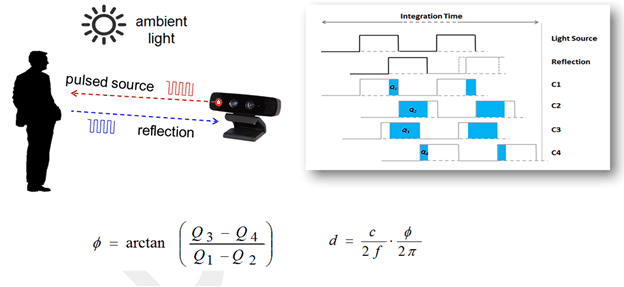SBOU157 September 2015 OPT8241
- Voxel Viewer
1.2 Operating Principles
All of these chipsets measure depth based on ToF principle where the scene is illuminated with modulated light at 850-nm wavelength. The phase difference between the emitted light and the light reflecting off the scene is measured, per pixel, and converted to depth; then the depth image is converted to point clouds, where each pixel is transformed into 3D coordinates with the origin at the optical center of the 3D ToF imager.
 Figure 1. 3D Time-of-Flight Sensor Operating Principle
Figure 1. 3D Time-of-Flight Sensor Operating Principle